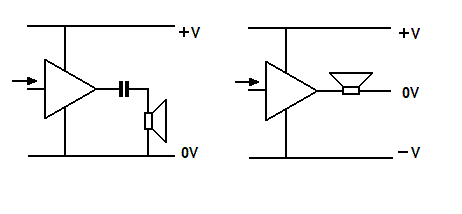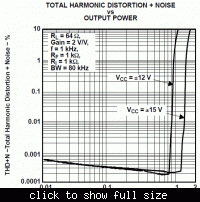Plecto
Full Member level 5
Hi. I've gotten a real interest in headphone amplifiers. I've made and sold some Cmoy amps, but I wanted something more powerfull to drive my heavy AKG K-701 headphones. I bought some LM386 and made a circuit which is supplied by a 12V wall-wart. I even implemented a bass-boost feature and with this activated, it can really play with my AKG's 
But I still don't feel I've crossed the finish line. I wan't to make and sell a headphone amp which will be able to drive any headphones to their limit, but my LM386 amp will have a hard time with headphones with an impedance of 600Ohms or so. I need something that can output a voltage of atleast +-13V and the LM386-4 can only output maybe +-8V. I've looked at chips like the TDA2004 and LM1875. These chips will definitely do the job, but these require a heatsink which will require more space and ventilation. These chips will also consume alot more power which will make running the amp off batteries impossible. I was thinking that battery operation could be an option, allthough getting 26V from batteries is hard, a 9V battery will probably do even though those with 600Ohm headsets would need an external power supply in order to get full power.
Are there any chips out there like the LM386 but with a higher supply voltage? I wan't my design to be simple, cheap and involve few components.
But I still don't feel I've crossed the finish line. I wan't to make and sell a headphone amp which will be able to drive any headphones to their limit, but my LM386 amp will have a hard time with headphones with an impedance of 600Ohms or so. I need something that can output a voltage of atleast +-13V and the LM386-4 can only output maybe +-8V. I've looked at chips like the TDA2004 and LM1875. These chips will definitely do the job, but these require a heatsink which will require more space and ventilation. These chips will also consume alot more power which will make running the amp off batteries impossible. I was thinking that battery operation could be an option, allthough getting 26V from batteries is hard, a 9V battery will probably do even though those with 600Ohm headsets would need an external power supply in order to get full power.
Are there any chips out there like the LM386 but with a higher supply voltage? I wan't my design to be simple, cheap and involve few components.




